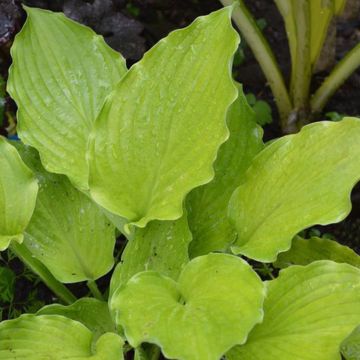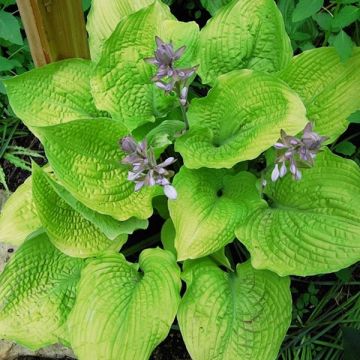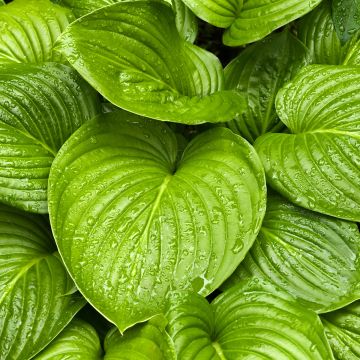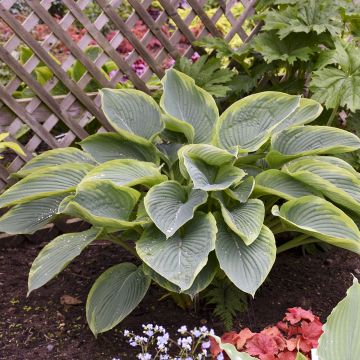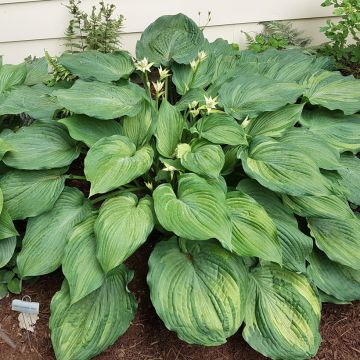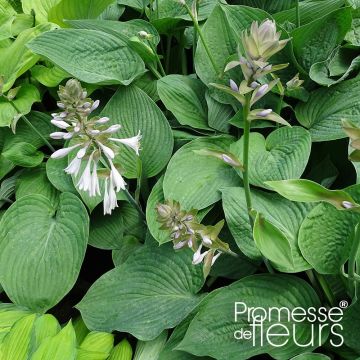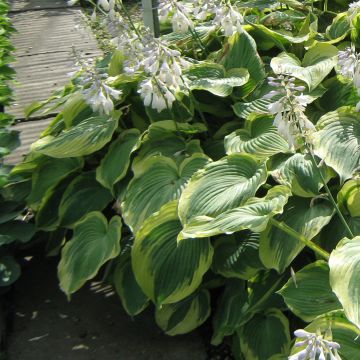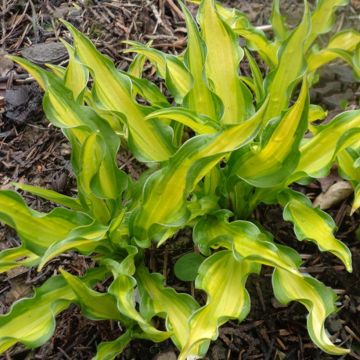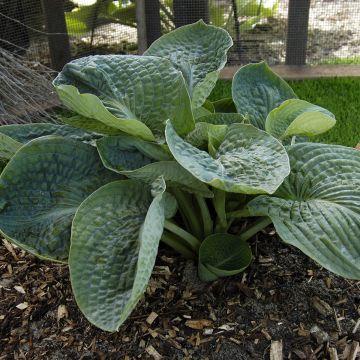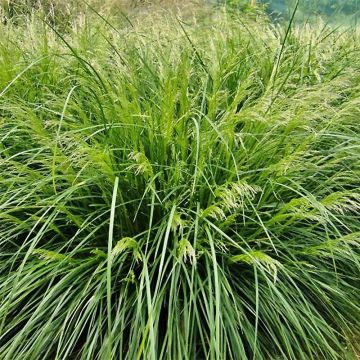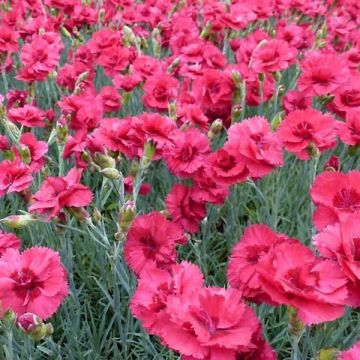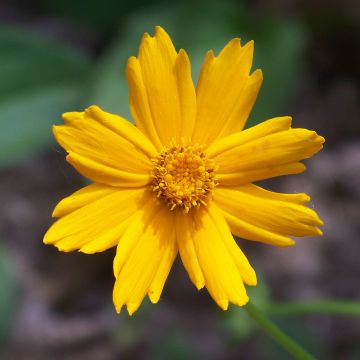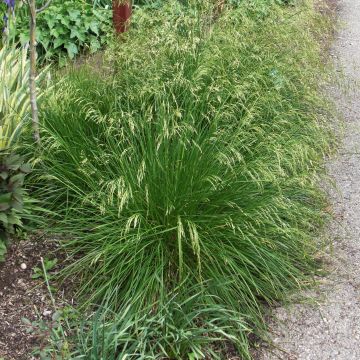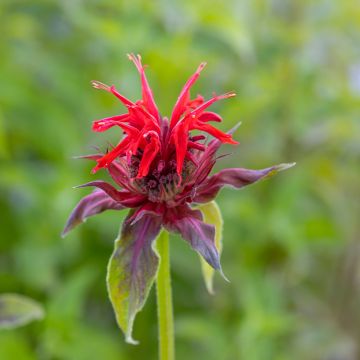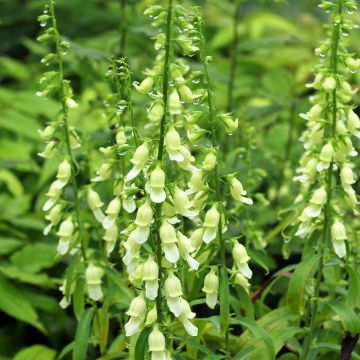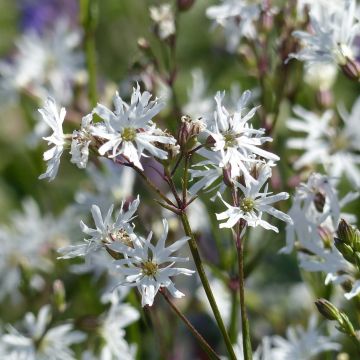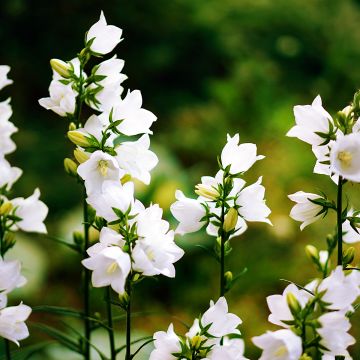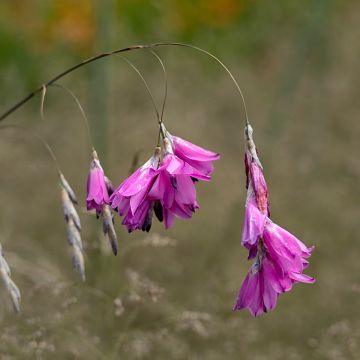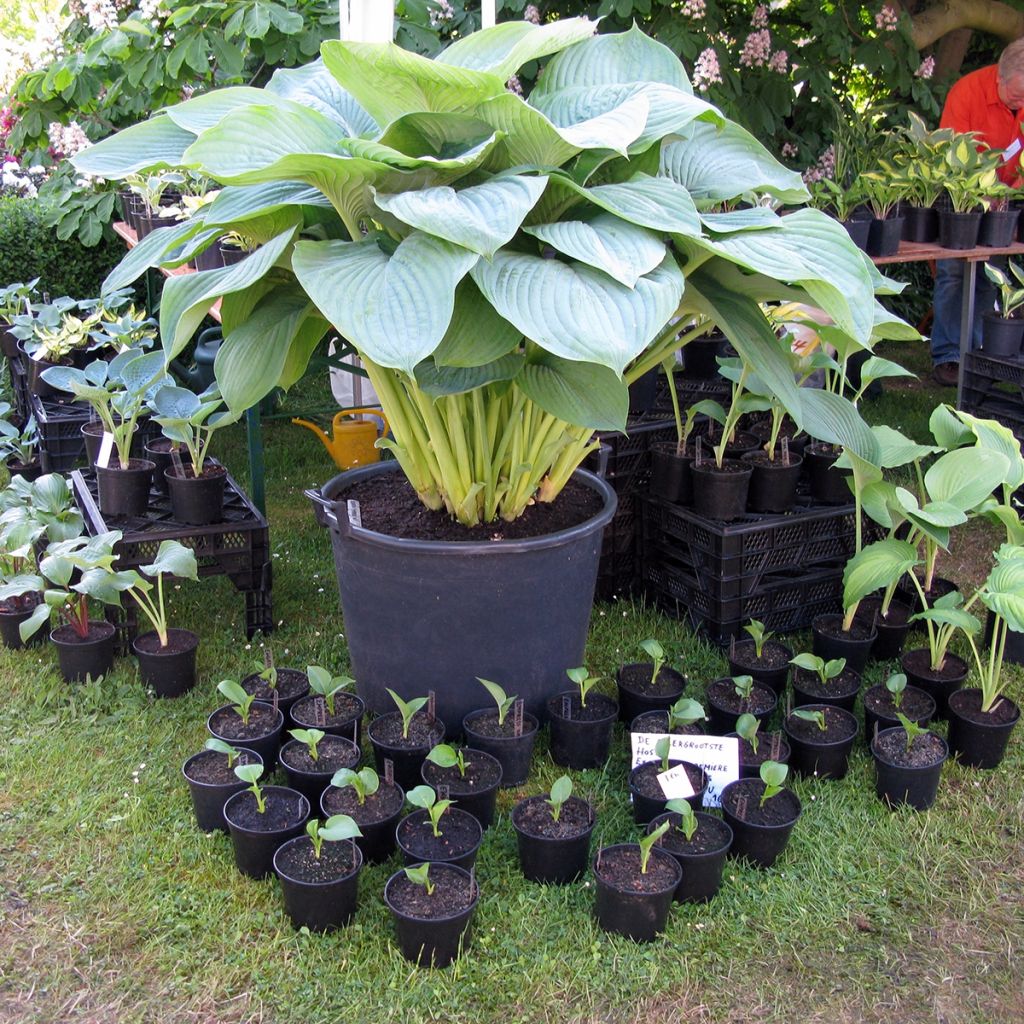

Hosta Empress Wu
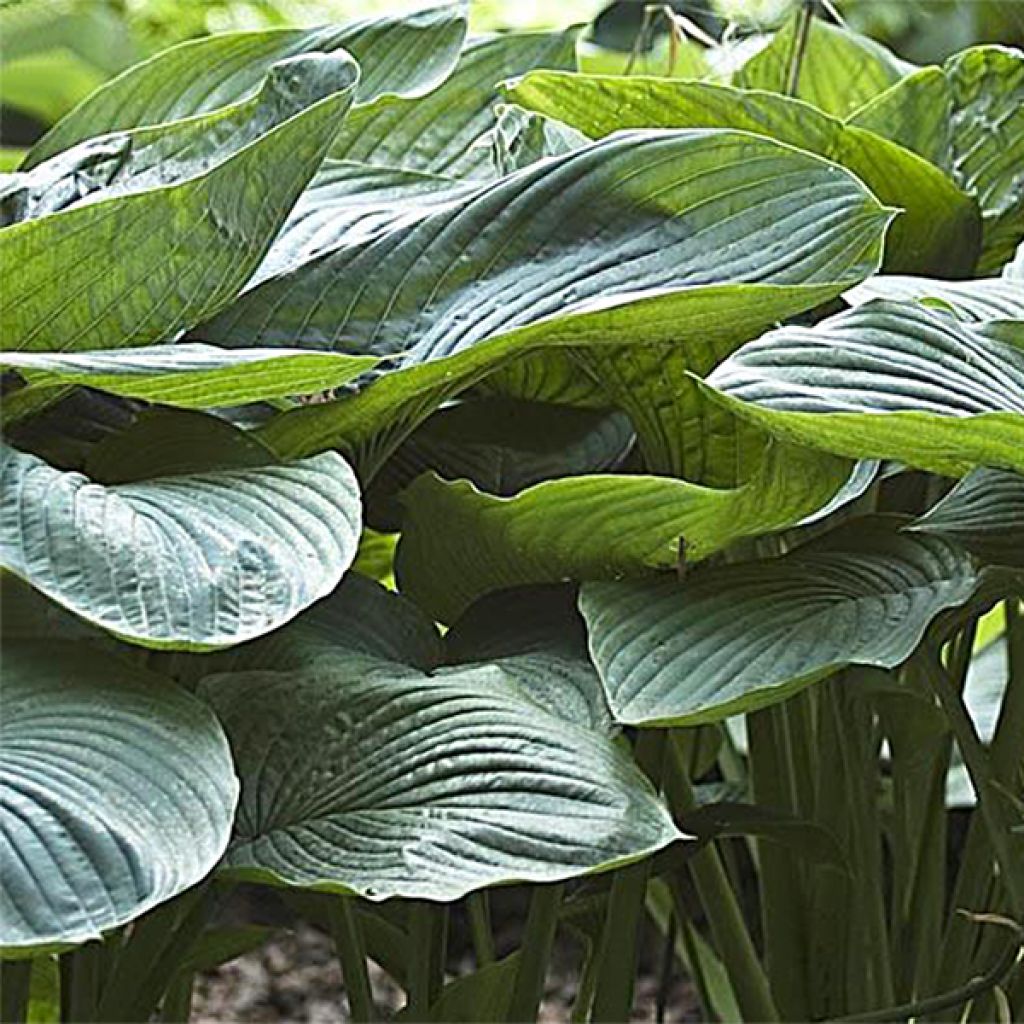

Hosta Empress Wu
Hosta Empress Wu
Hosta Empress Wu
Plantain Lily, Funkia
This item cannot be shipped to the selected country
Delivery charge from €5.90
Delivery charge from €5.90
More information
Schedule delivery date,
and select date in basket
This plant carries a 12 months recovery warranty
More information
We guarantee the quality of our plants for a full growing cycle, and will replace at our expense any plant that fails to recover under normal climatic and planting conditions.
From €5.90 for pickup delivery and €6.90 for home delivery
Express home delivery from €8.90.
From €5.90 for pickup delivery and €6.90 for home delivery
Express home delivery from €8.90.
Does this plant fit my garden?
Set up your Plantfit profile →
Description
The Hosta 'Empress Wu' is undoubtedly the largest variety of hosta currently available. Still rare, this magnificent plant forms a majestic clump, reaching 1.30 m (4ft) in all directions, with a beautiful spreading habit. Its immense heart-shaped leaves are thick and wavy, with very pronounced veins that wonderfully enhance their green-blue color. It offers a somewhat timid flowering in summer, with sparse, pale lavender bells. This gentle monster deserves a prime location and appropriate growing conditions that will allow it to display all its splendor. A grandiose variety, with a superlative character, to be grown in fertile and moist, but well-drained soil, in partial shade or even in full shade.
This Hosta, or Funkia, is a completely hardy perennial, named in honor of the only empress who reigned over the Chinese empire. It belongs to the lily or hosta family. A cross between the Hosta 'Big John' and a large Japanese species called Hosta montana macrophylla, 'Empress Wu' was born in the United States in 2008. This large perennial shows, starting from spring, a wide clump habit. The plant, reaching maturity in 5 or 6 years, will reach a height of 1.30 m (4ft) and will spread just as much if the conditions are right. It is a long-lived plant, with deciduous foliage, whose strongly veined leaves emerge in a matte green-blue color in spring, in a rounded heart shape. They lose the waxy and bluish layer that covers them in summer, revealing a dark green color, slightly satin. The lamina, which measures more than 60 cm (24in) in length, is thick and slightly bumpy. This thick foliage is resistant to attacks from gastropods. The flowering takes place in June-July, in the form of small bells, clustered at the top of the peduncles that slightly emerge from the foliage. Each flower is supported by a large pale lavender bract. This perennial spreads through stolons, similar to strawberries.
The planting of the 'Empress Wu' Hosta must be carefully considered and wisely chosen. The volume that the mature plant will occupy makes it suitable for forming a mass on its own; for example, it can be installed as a standalone plant to highlight the curve of a shaded path, on the edge of a woodland, sheltered from the wind, where the soil is deep and fertile. This large hosta will blend well in partial shade with ferns, pigamons, and Claytonia sibirica, with which it forms beautiful colorful duos that require little maintenance. It will also be advantageous when combined with acteas with purple foliage, columbines, and tall foxgloves. All hostas grow well in pots and can remain in the same container for several years. A very large pot should be chosen for 'Empress Wu', and a special geranium potting soil should be used during the growing season. As long as the foliage is not too dense, watering from the top of the pot can be done. Then place a saucer under the pot where you will pour water, keeping the level constant in summer.
Most of the species spread in Western gardens have been introduced from Japan. Hostas are edible and are called 'urui' in Japan, where they are commonly consumed.
Report an error about the product description
Hosta Empress Wu in pictures
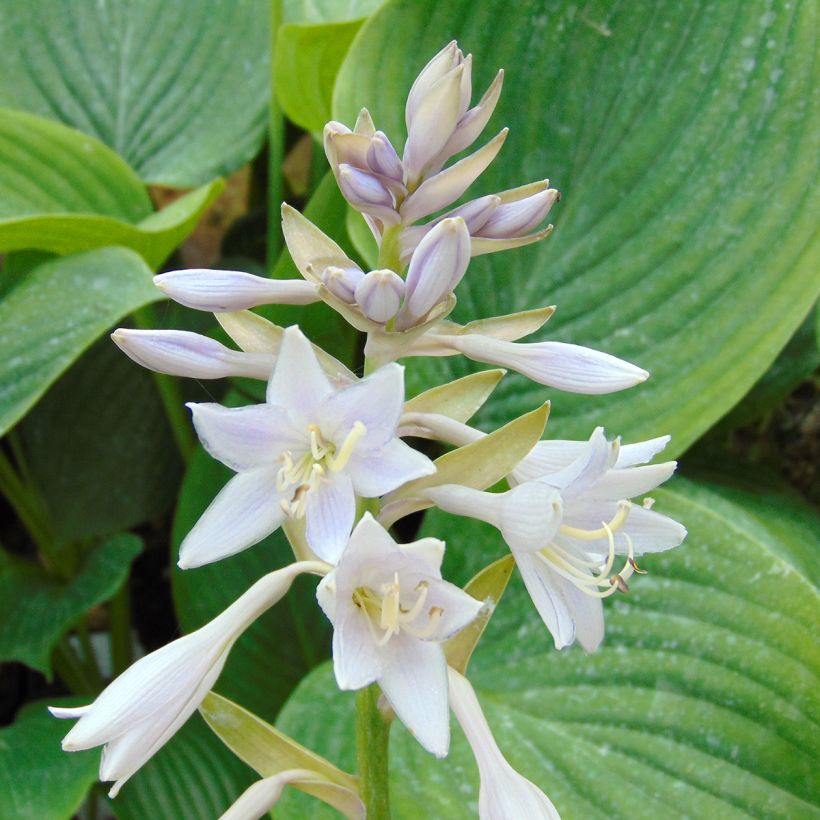



Flowering
Foliage
Plant habit
Botanical data
Hosta
Empress Wu
Liliaceae - Hostaceae
Plantain Lily, Funkia
Cultivar or hybrid
Other Giant Hostas
Planting and care
Hostas are planted in spring or autumn. Hostas prefer a deep, rich, humus-bearing, loose soil, preferably neutral to acidic (at least poor in limestone), moist to wet throughout the year. Plant them in semi-shade or dappled shade, and in a sheltered position away from strong winds.
Prepare a planting hole of 20 cm (8in) x 20 cm (8in) x 20 cm (8in). If your soil is heavy, mix equal parts of compost with crumbled soil, partially backfill the hole, and place your plant with its root ball so that the top of the root ball is covered with 3 cm (1in) of soil. Adding a base fertiliser (dehydrated blood, horn powder) will nourish your plant during its rooting period without the risk of burning. Make sure to position the collar well above ground level. Firmly press the soil and water generously to eliminate air pockets. If the weather is dry, regular watering for a few weeks will help facilitate the establishment of your plant. Also, water regularly in case of a dry summer.
With their common preference for moist places, slugs and snails never stay far from hostas. Even though blue or variegated hostas often have thicker and tougher foliage, which is less appetising to slugs, these plants must be protected from gastropods. Protect your hosta plants by surrounding them with ferramol-based pellets (approved for Organic Agriculture), crushed eggshells, coffee grounds, mulch, or any dry and rough natural substance that repels them. Hedgehogs are the gardener's best allies in the fight against gastropods, as unlike chickens, they do not till the soil and do not attack the tender green shoots of young plants. Finally, certain plants have a repulsive odor to slugs, such as wormwood and garlic.
Planting period
Intended location
Care
-
, onOrder confirmed
Reply from on Promesse de fleurs
Summer flowering perennials
Haven't found what you were looking for?
Hardiness is the lowest winter temperature a plant can endure without suffering serious damage or even dying. However, hardiness is affected by location (a sheltered area, such as a patio), protection (winter cover) and soil type (hardiness is improved by well-drained soil).

Photo Sharing Terms & Conditions
In order to encourage gardeners to interact and share their experiences, Promesse de fleurs offers various media enabling content to be uploaded onto its Site - in particular via the ‘Photo sharing’ module.
The User agrees to refrain from:
- Posting any content that is illegal, prejudicial, insulting, racist, inciteful to hatred, revisionist, contrary to public decency, that infringes on privacy or on the privacy rights of third parties, in particular the publicity rights of persons and goods, intellectual property rights, or the right to privacy.
- Submitting content on behalf of a third party;
- Impersonate the identity of a third party and/or publish any personal information about a third party;
In general, the User undertakes to refrain from any unethical behaviour.
All Content (in particular text, comments, files, images, photos, videos, creative works, etc.), which may be subject to property or intellectual property rights, image or other private rights, shall remain the property of the User, subject to the limited rights granted by the terms of the licence granted by Promesse de fleurs as stated below. Users are at liberty to publish or not to publish such Content on the Site, notably via the ‘Photo Sharing’ facility, and accept that this Content shall be made public and freely accessible, notably on the Internet.
Users further acknowledge, undertake to have ,and guarantee that they hold all necessary rights and permissions to publish such material on the Site, in particular with regard to the legislation in force pertaining to any privacy, property, intellectual property, image, or contractual rights, or rights of any other nature. By publishing such Content on the Site, Users acknowledge accepting full liability as publishers of the Content within the meaning of the law, and grant Promesse de fleurs, free of charge, an inclusive, worldwide licence for the said Content for the entire duration of its publication, including all reproduction, representation, up/downloading, displaying, performing, transmission, and storage rights.
Users also grant permission for their name to be linked to the Content and accept that this link may not always be made available.
By engaging in posting material, Users consent to their Content becoming automatically accessible on the Internet, in particular on other sites and/or blogs and/or web pages of the Promesse de fleurs site, including in particular social pages and the Promesse de fleurs catalogue.
Users may secure the removal of entrusted content free of charge by issuing a simple request via our contact form.
The flowering period indicated on our website applies to countries and regions located in USDA zone 8 (France, the United Kingdom, Ireland, the Netherlands, etc.)
It will vary according to where you live:
- In zones 9 to 10 (Italy, Spain, Greece, etc.), flowering will occur about 2 to 4 weeks earlier.
- In zones 6 to 7 (Germany, Poland, Slovenia, and lower mountainous regions), flowering will be delayed by 2 to 3 weeks.
- In zone 5 (Central Europe, Scandinavia), blooming will be delayed by 3 to 5 weeks.
In temperate climates, pruning of spring-flowering shrubs (forsythia, spireas, etc.) should be done just after flowering.
Pruning of summer-flowering shrubs (Indian Lilac, Perovskia, etc.) can be done in winter or spring.
In cold regions as well as with frost-sensitive plants, avoid pruning too early when severe frosts may still occur.
The planting period indicated on our website applies to countries and regions located in USDA zone 8 (France, United Kingdom, Ireland, Netherlands).
It will vary according to where you live:
- In Mediterranean zones (Marseille, Madrid, Milan, etc.), autumn and winter are the best planting periods.
- In continental zones (Strasbourg, Munich, Vienna, etc.), delay planting by 2 to 3 weeks in spring and bring it forward by 2 to 4 weeks in autumn.
- In mountainous regions (the Alps, Pyrenees, Carpathians, etc.), it is best to plant in late spring (May-June) or late summer (August-September).
The harvesting period indicated on our website applies to countries and regions in USDA zone 8 (France, England, Ireland, the Netherlands).
In colder areas (Scandinavia, Poland, Austria...) fruit and vegetable harvests are likely to be delayed by 3-4 weeks.
In warmer areas (Italy, Spain, Greece, etc.), harvesting will probably take place earlier, depending on weather conditions.
The sowing periods indicated on our website apply to countries and regions within USDA Zone 8 (France, UK, Ireland, Netherlands).
In colder areas (Scandinavia, Poland, Austria...), delay any outdoor sowing by 3-4 weeks, or sow under glass.
In warmer climes (Italy, Spain, Greece, etc.), bring outdoor sowing forward by a few weeks.

































